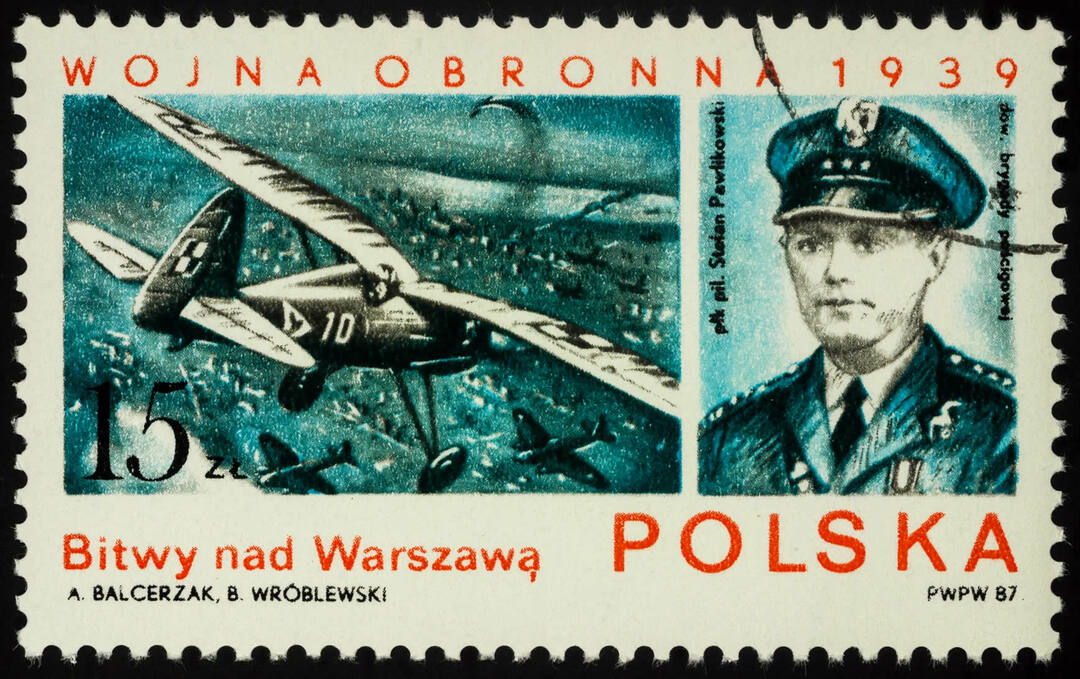Nazi-Soviet invasion of Poland 1939
Miscellanea / / July 04, 2021
By Guillem Alsina González, in Jul. 2018
 Although Japan had attacked the part of China that it did not yet possess in 1937, a conflict which would be part of the Second World War, the start date of this global conflagration is placed on September 1, 1939, when German troops entered Poland.
Although Japan had attacked the part of China that it did not yet possess in 1937, a conflict which would be part of the Second World War, the start date of this global conflagration is placed on September 1, 1939, when German troops entered Poland.
The operation Fall weiss It is the plan for the Nazi invasion of Poland, which in its final phase had the collaboration of the USSR, making good the secret protocols of the Ribbentrop-Molotov non-aggression pact.
Fall Weiss would be the first exponent of the call Blitzkrieg, a type of war in which the actions of the ground troops and air, using armored forces as a spearhead to break the enemy front and, in this way, advance easily, with aviation causing chaos behind enemy lines to hinder enemy action from defending. A tactic that would revolutionize war.
The casus belli It was part of the operation, developed at a theoretical level before the attack - which was already foreseen by Hitler in his plans - and consisted of simulating a Polish cross-border attack.
Although internationally no one believed it, blaming Germany for the attack, the German secret service simulated the attack by Polish soldiers on a German radio station, using Polish-speaking German soldiers (to broadcast anti-German slogans on the radio), and assassinated political prisoners who wore uniforms Poles.
It was what came to be called the Gleiwitz Incident, a false flag operation carried out on August 1939, which served as an excuse for the next day Germany to begin the invasion of Poland.
The German army sought to take the Pole by surprise in a pincer movement, starting from the south, from Slovakia, and from the north, with a group that had two starting points: East Prussia, and the same territory German.
The Prussian fortress was the main headache of the allies, since both London and Paris believed that the Polish army could cope the German for long enough to be able to threaten to intervene in the west, which apparently from both cabinets would dissuade Hitler from withdrawing his troops.
However, the Poles ignored the advice of the Franco-British advisers to withdraw their troops from the border and leave the field to the Wehrmacht waiting for her further into the country.
The Poles had shed a lot of blood to achieve a state of their own, and their military and political leaders were not willing to give up a foot of ground. Strategically, this decision proved to be a mistake.
Hitler also counted on Soviet intervention; Poland had already been divided in two with Stalin.
The great problem of the Poles was the disproportion in the air fleet; the Luftwaffe tripled the force Polish airline, in addition to having more modern aircraft models. Once the Germans gained dominion of the skies, they did what they wanted, including the systematic destruction by bombardment of civilian targets and columns of refugees.
 Still unknown with safety which unit were the first shots of the campaign, but the options are between a squad of Stukas bombarding the protections of the bridges over the Vistula at Tczew, or it was the battleship Schleswig-Holstein firing on the fortress of the Westerplatte.
Still unknown with safety which unit were the first shots of the campaign, but the options are between a squad of Stukas bombarding the protections of the bridges over the Vistula at Tczew, or it was the battleship Schleswig-Holstein firing on the fortress of the Westerplatte.
What followed is one of the most sweeping military operations of all time. However, the Polish army put up a tougher resistance than many people realize.
Thus, there were heroic acts of resistance against the German advance, as is the case of the same resistance on the Westerplatte, in manifest numerical inferiority, for a week. In surrendering the square, the German attackers squared off before the defenders to pay them honors, thus acknowledging both their tenacity and skill military.
This display of camaraderie was one of the few in a campaign that was characterized by unrepentant brutality. on the Nazi side with, for example, the Einsatzgruppen committing assassinations and other atrocities in the territories that Wehrmacht was conquering.
We also find the battle of Bzura, in which the Polish counterattack drove back the German troops, more numerous, better equipped and theoretically with a better moral of combat.
The almost suicidal push of the Poles made a dent in the German attackers, who finally prevailed only by the Polish impossibility of transferring reinforcements and supplies to the front, which did not allow them to take advantage of the push of this counterattack.
Although there is a legend that in this campaign the spearmen to horse Poles attacked German armored units on the charge, there is no conclusive evidence of such a confrontation - on the other hand, clearly suicidal - although some historians claim that the spearmen did indeed charge the tanks from a position that allowed them to do it by surprise, to spear the infantrymen who were mounted on the chariots, using them as a transport.
Such action, despite being highly exposed to risk, would have made more sense than the mythical open field load attributed to them.
On September 17, with much of the Polish territory under German rule and little hope of being able to resist much longer, Poland suffers a stab in the back by the Union Soviet.
Brandishing as an excuse for the invasion the protection of the Polish people before a government (the Polish himself) that had abandoned it.
Although initially the Polish army tried to resist the Soviet advance, it soon saw that such resistance was useless; with practically all forces engaged on the western front against Germany, the Polish troops in the east had nothing to oppose the Soviet attackers.
Between September 17 and 20, German and Soviet troops began to meet after advancing from opposite points, and even to collaborate with each other to defeat the Poles, as happened in the fortress of Brest, taken by German troops with the collaboration of the Soviet
After a heroic resistance, the last Polish units surrendered on October 6, 1939, after little more than a month of confrontation.
Poland had been treacherously attacked from behind, and had suffered the abandonment of its theorists allies (France and the United Kingdom), who did nothing and would suffer this inactivity on their own meats.
The Polish government was exiled to London, and Poland began a long martyrdom with mass murders, such as those committed by the state in the forests of Katyn or the ethnic and cultural cleansing that both Nazis and Soviets subjected the country to acculturalize its population, assimilate it and thus force the disappearance of Poland as a cultural entity.
It would not be the last time that Poland was sold; Churchill and Roosevelt would cede it to Stalin as part of the Soviet zone of influence in postwar Europe. The Polish soldiers who fought bravely alongside the Western allies in campaigns like the Italian one did not even have right to parade with their comrades in arms from other countries or be recognized.
Figures like Marshal Rydz-Śmigły, hero of the Polish resistance, could not be duly honored by his people until the early 1990s, when the Iron Curtain fell.
Photos: Fotolia - Gokidesign / Vic
Themes in Nazi-Soviet Invasion of Poland 1939


